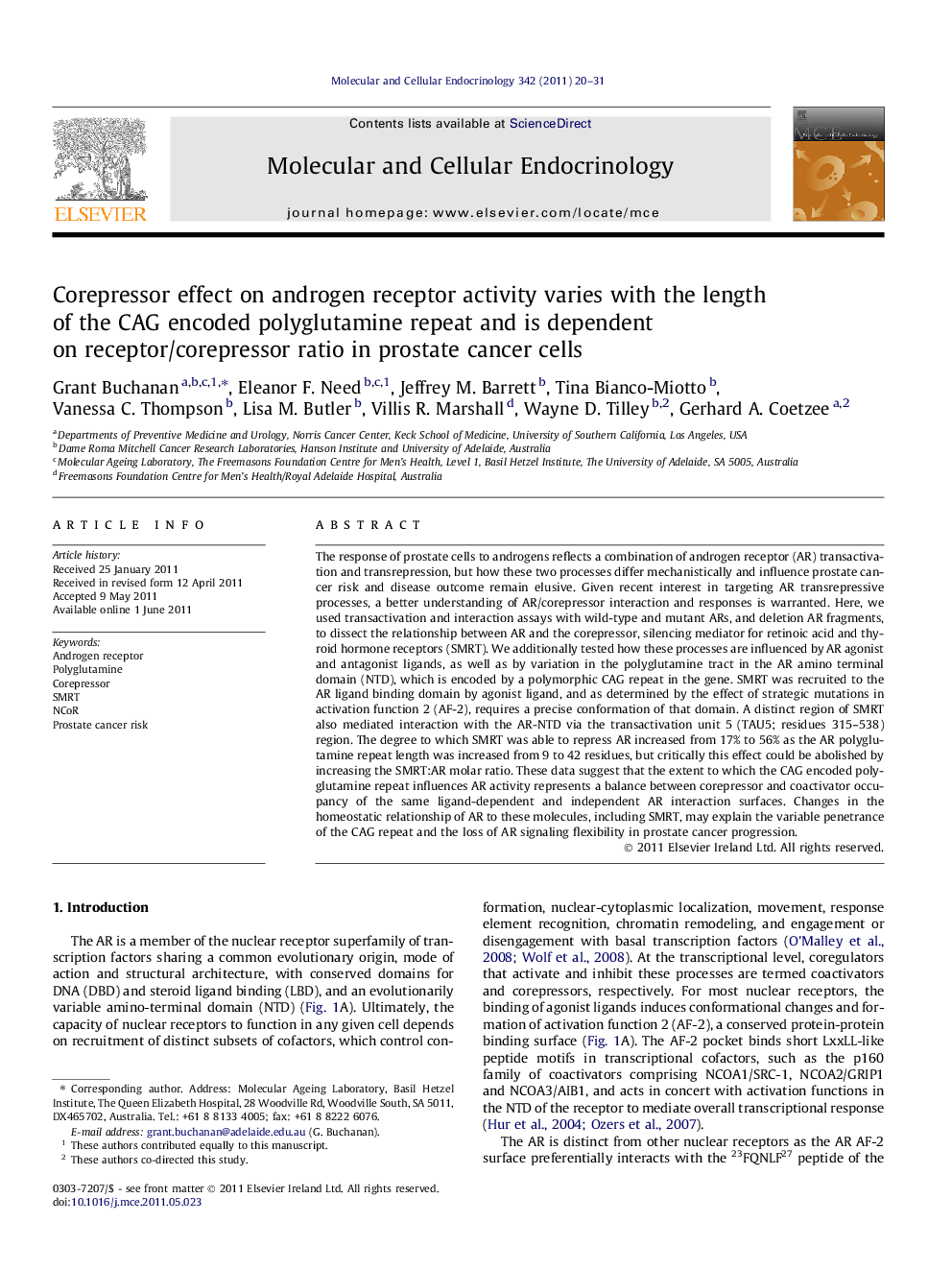| کد مقاله | کد نشریه | سال انتشار | مقاله انگلیسی | نسخه تمام متن |
|---|---|---|---|---|
| 2196567 | 1550928 | 2011 | 12 صفحه PDF | دانلود رایگان |

The response of prostate cells to androgens reflects a combination of androgen receptor (AR) transactivation and transrepression, but how these two processes differ mechanistically and influence prostate cancer risk and disease outcome remain elusive. Given recent interest in targeting AR transrepressive processes, a better understanding of AR/corepressor interaction and responses is warranted. Here, we used transactivation and interaction assays with wild-type and mutant ARs, and deletion AR fragments, to dissect the relationship between AR and the corepressor, silencing mediator for retinoic acid and thyroid hormone receptors (SMRT). We additionally tested how these processes are influenced by AR agonist and antagonist ligands, as well as by variation in the polyglutamine tract in the AR amino terminal domain (NTD), which is encoded by a polymorphic CAG repeat in the gene. SMRT was recruited to the AR ligand binding domain by agonist ligand, and as determined by the effect of strategic mutations in activation function 2 (AF-2), requires a precise conformation of that domain. A distinct region of SMRT also mediated interaction with the AR-NTD via the transactivation unit 5 (TAU5; residues 315–538) region. The degree to which SMRT was able to repress AR increased from 17% to 56% as the AR polyglutamine repeat length was increased from 9 to 42 residues, but critically this effect could be abolished by increasing the SMRT:AR molar ratio. These data suggest that the extent to which the CAG encoded polyglutamine repeat influences AR activity represents a balance between corepressor and coactivator occupancy of the same ligand-dependent and independent AR interaction surfaces. Changes in the homeostatic relationship of AR to these molecules, including SMRT, may explain the variable penetrance of the CAG repeat and the loss of AR signaling flexibility in prostate cancer progression.
► Repression by SMRT increases with the length of the polymorphic AR CAG repeat.
► SMRT represses AR agonist activity by binding to both activation functions 1 and 2.
► Ligands discriminate recruitment of SMRT and the receptors NTD (N/C interaction).
► An induced structural model of corepressor recruitment and AR responses.
Journal: Molecular and Cellular Endocrinology - Volume 342, Issues 1–2, 6 August 2011, Pages 20–31